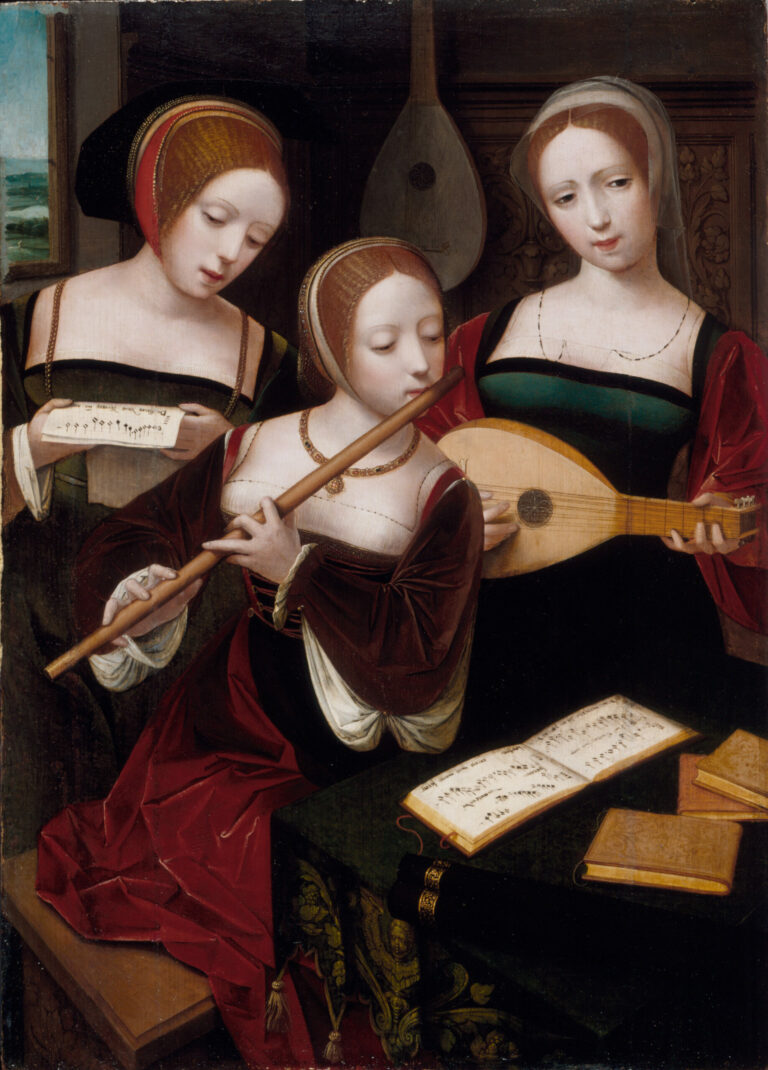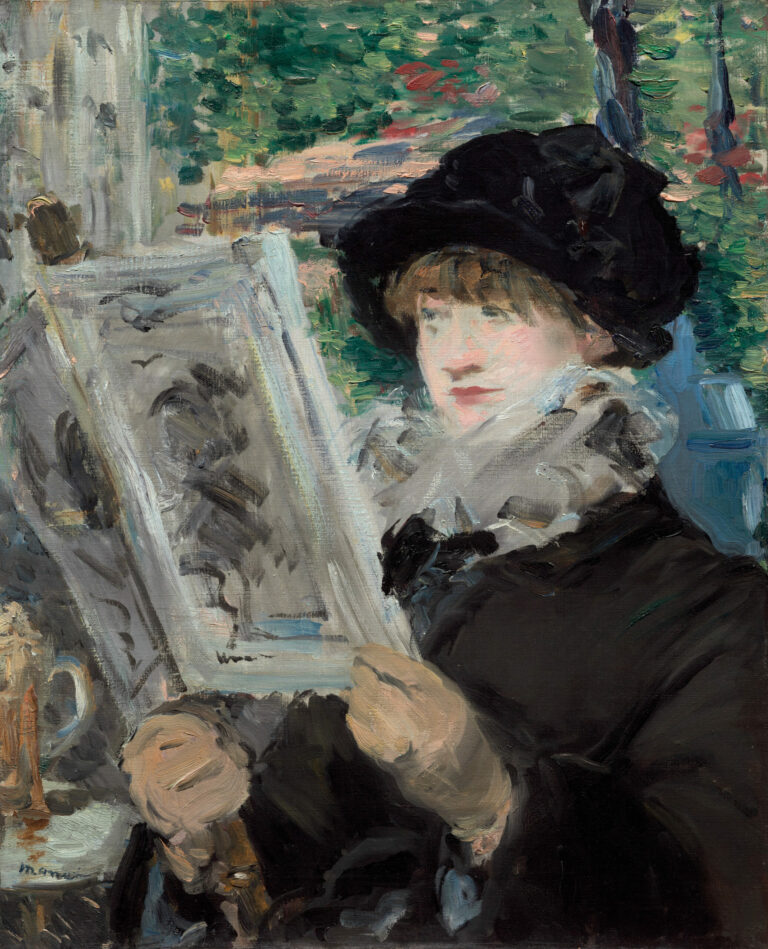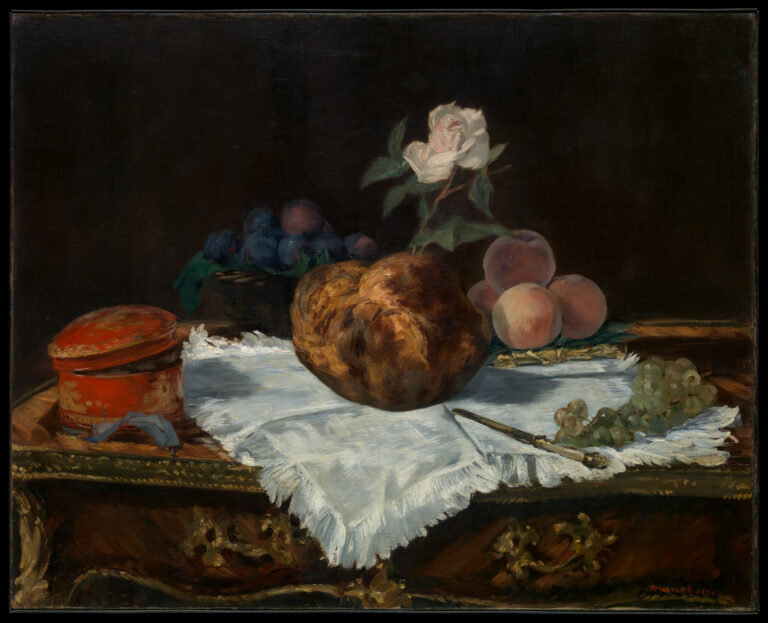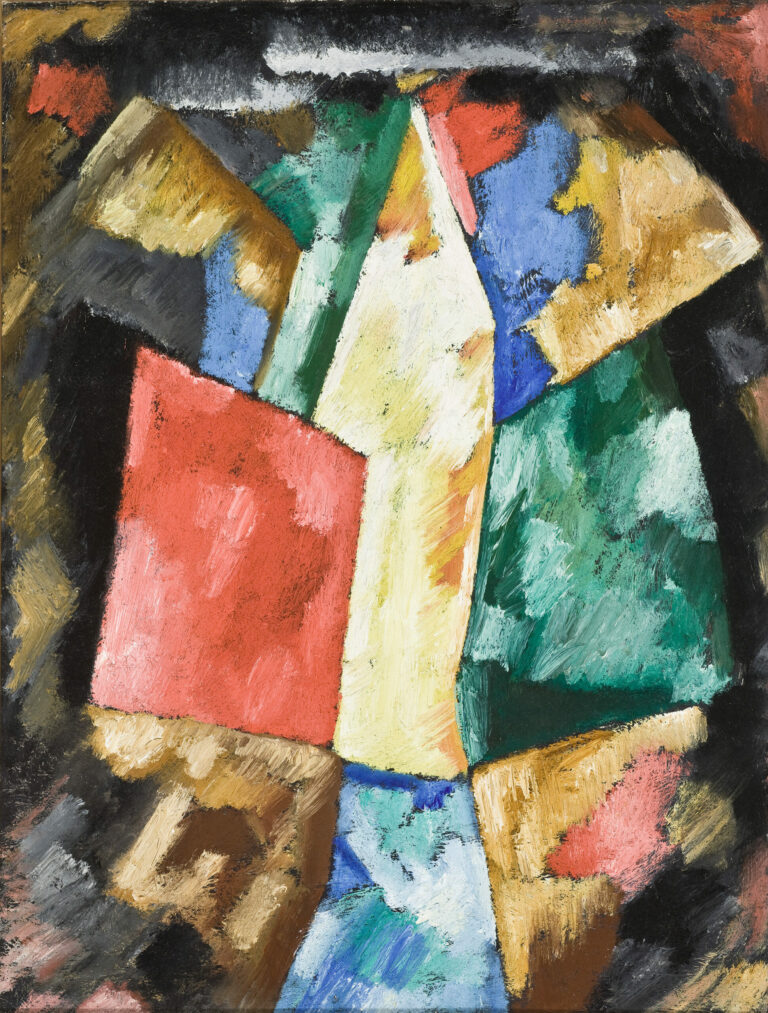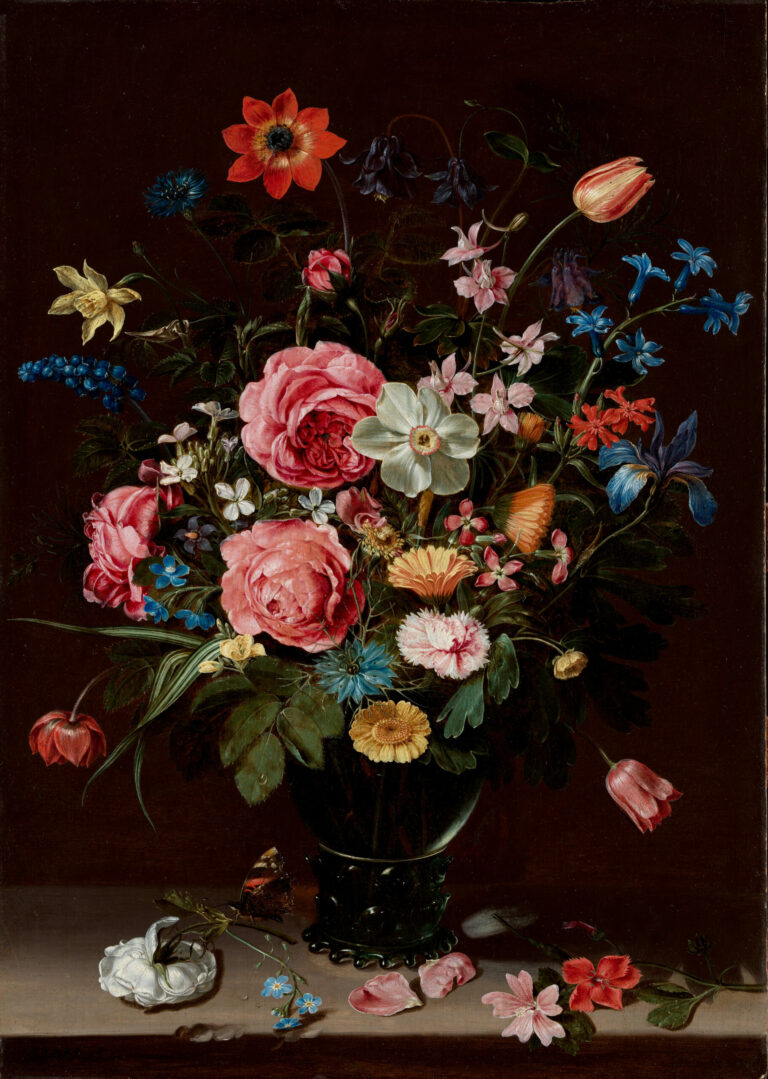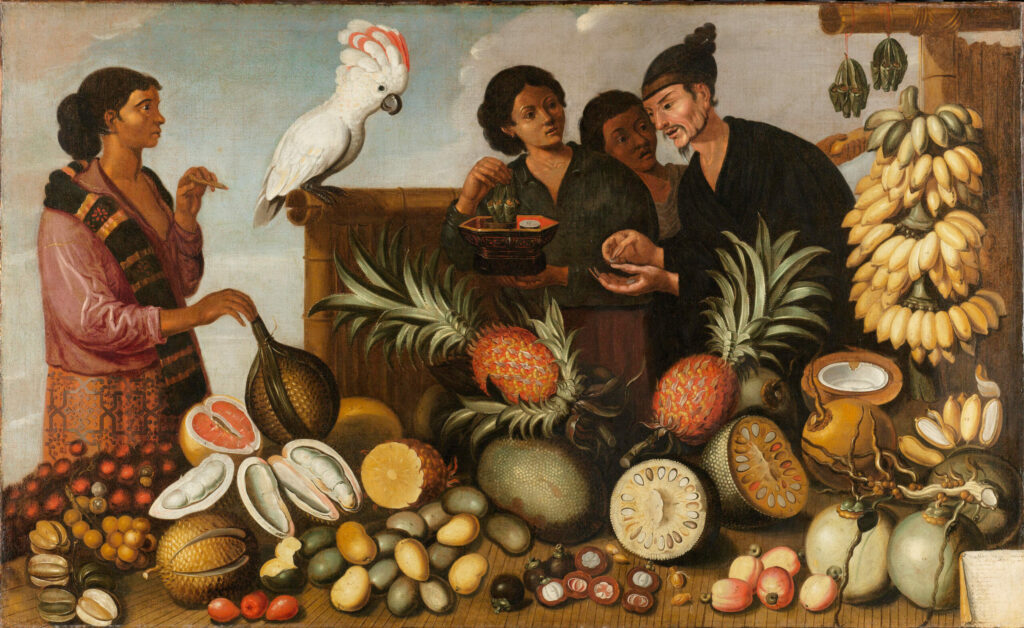
This remarkable market scene illustrates with striking ethnographic precision the cultural and commercial diversity of Batavia, capital of the Dutch East Indies in the 17th century.
The painter presents here a veritable inventory of tropical riches: pineapples, mangosteens, durians, rambutans and other exotic fruits displayed in a colorful profusion that testifies to the prosperity of colonial trade. The composition reveals the harmonious interaction between different communities: the Chinese merchant negotiates with three Javanese women in a scene of daily exchange. Every detail carries documentary weight: the handwritten sheet identifying the fruits, the betel nuts in their traditional packaging, the Siamese lacquer of the container, or the white cockatoo perched on the bamboo fence. This work transcends the simple still life to become a unique anthropological testimony to the mixed society of the Indonesian archipelago, where local traditions, Chinese influences and European presence blend in a fascinating commercial cosmopolitanism.
To learn more
- A Market Stall in Batavia attributed to Andries Beeckman c. 1640 – c. 1666
- 106 x 175.5 cm
- The Rijksmuseum, Amsterdam
- https://www.rijksmuseum.nl/en/collection/object/A-Market-Stall-in-Batavia–cded1111f2cbf27f9e5894272e12327e
Andries Beeckman (circa 1628-1664) remains one of the most singular painters of the Dutch Golden Age, known for his representations of Dutch colonial territories. He settled in the Dutch East Indies where he developed a unique documentary style, blending European tradition with direct observation of tropical realities. His works constitute a rare iconographic testimony to 17th-century colonial society, particularly of Batavia (present-day Jakarta) and its surroundings. Few works by his hand are known.

